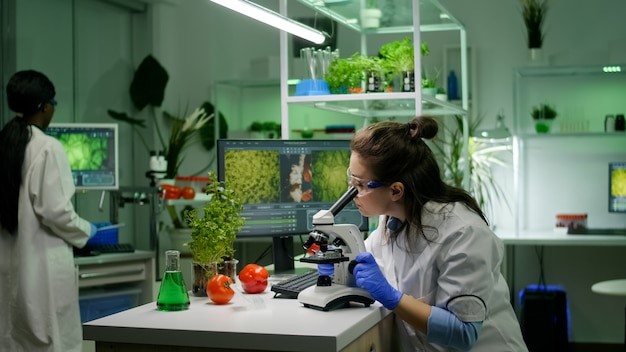Food preservation is essential for ensuring food safety, extending shelf life, and reducing waste, thereby playing a crucial role in meeting global food demands and maintaining food quality. Traditional methods like canning, freezing, and drying have served us well, but the food industry is now witnessing a transformation through the latest innovations in preservation techniques. These advancements are introducing more efficient, sustainable, and effective methods that promise to revolutionise the way we preserve food. This blog delves into these cutting-edge technologies, examining how they work, their benefits, and their impact on the industry. Our goal is to provide food industry professionals with valuable insights into these innovations, encouraging the adoption of these new technologies to enhance business operations and contribute to improved food security.
Traditional Food Preservation Methods
Traditional food preservation methods have been used for centuries to extend the shelf life of food, ensuring that it remains safe and consumable over longer periods. Some of the most common traditional methods include:
Canning: This process involves placing foods in jars or cans and heating them to a temperature that destroys microorganisms and inactivates enzymes. Once sealed, the containers prevent new bacteria from entering, preserving the food inside.
Freezing: Freezing food slows down the activity of enzymes and microorganisms that cause spoilage. By storing food at temperatures below freezing, it can be kept safe to eat for extended periods.
Drying: Drying removes moisture from food, which inhibits the growth of bacteria, yeasts, and moulds. This can be achieved through air drying, sun drying, or using modern dehydrators.
Cutting-Edge Technologies in Food Preservation
Recent advancements in food preservation have introduced innovative methods that enhance food longevity, safety, and quality. High-pressure processing (HPP) uses extreme pressure to eliminate bacteria without high temperatures, preserving nutritional value and taste. Cold plasma technology employs ionised gas to kill pathogens on food surfaces. Edible coatings and films, made from natural substances, create protective barriers against moisture and microbes, extending shelf life. Pulsed electric fields (PEF) apply high voltage bursts to disrupt microbial cells, maintaining food texture and flavour. Additionally, smart packaging solutions, like oxygen scavengers and moisture absorbers, help maintain optimal storage conditions. These technologies offer more efficient and sustainable ways to preserve food.
Explanation of HPP Technology
High-Pressure Processing (HPP) is a food preservation method that uses extremely high pressure, typically around 600 megapascals (MPa), to inactivate harmful microorganisms and enzymes in food. Unlike traditional methods that rely on heat, HPP applies pressure uniformly around and through the food, which disrupts the cellular structures of pathogens without raising the temperature. This method preserves the food’s natural taste, texture, and nutritional content.
- Benefits of HPP
The benefits of HPP are significant. It retains the nutritional value of food, as the process does not involve high temperatures that can degrade vitamins and minerals. Additionally, HPP extends the shelf life of food by effectively eliminating spoilage microorganisms and pathogens, thus maintaining food quality and safety. The method is particularly beneficial for preserving the freshness and sensory attributes of perishable products, making it a preferred choice for premium and natural food products.
- Examples of Foods Preserved Using HPP
HPP is widely used for preserving various foods, including juices, smoothies, guacamole, ready-to-eat meats, seafood, and dairy products. For instance, many cold-pressed juice brands use HPP to ensure their beverages remain fresh and safe without losing the vibrant flavours and nutrients that consumers expect. Similarly, HPP is used in the seafood industry to enhance the safety and shelf life of products like oysters and smoked salmon.
Cold Plasma Technology
Cold plasma technology is an innovative non-thermal food preservation method that uses ionised gas, known as plasma, to inactivate microorganisms on food surfaces. This method generates reactive species, such as electrons, ions, and radicals, which effectively kill bacteria, viruses, and molds without applying heat. The technology can be used at room temperature, making it ideal for preserving heat-sensitive products.
- Advantages of Cold Plasma
Cold plasma offers several advantages. It is a non-thermal process, meaning it does not alter the food’s temperature, thus preserving the food’s original texture and nutritional quality. It uses minimal chemicals, making it an environmentally friendly option with fewer residues left on the food. Furthermore, cold plasma is highly effective against a wide range of pathogens, providing a robust means of enhancing food safety.
- Current Applications and Research
Current applications of cold plasma technology include the treatment of fresh produce, meats, and bakery products to extend shelf life and ensure safety. Research is ongoing to optimise the technology for different food matrices and to understand its effects on various food components. Studies are also exploring its potential in decontaminating packaging materials and improving the safety of ready-to-eat foods.
Edible Coatings and Films
Edible coatings and films are thin layers of edible materials applied to the surface of food products to extend their shelf life and improve quality. These coatings are made from natural substances such as polysaccharides, proteins, and lipids, which form a barrier against moisture, oxygen, and microbial contamination. They can be applied through dipping, spraying, or brushing onto the food surface.
- Benefits of Edible Coatings
Edible coatings enhance Food Safety by inhibiting the growth of spoilage microorganisms and pathogens. They help in reducing food waste by prolonging the freshness and shelf life of perishable products. Additionally, these coatings can be infused with natural antioxidants, antimicrobials, and other functional ingredients to further improve food quality and safety.
- Examples of Foods Using Edible Coatings and Films
Edible coatings are used on a variety of foods, including fruits, vegetables, cheeses, and meats. For example, a thin layer of chitosan, a polysaccharide derived from shellfish, is applied to fruits like strawberries and apples to reduce microbial growth and delay ripening. Cheese manufacturers use edible coatings to prevent mould growth and retain moisture, enhancing the product’s shelf life and quality.
Pulsed Electric Fields (PEF)
Pulsed Electric Fields (PEF) technology involves applying short bursts of high voltage to food products placed between two electrodes. The electric pulses create temporary pores in the cell membranes of microorganisms, leading to their inactivation. This method is conducted at moderate temperatures, thus preserving the food’s sensory and nutritional properties.
- Benefits of PEF
PEF technology offers several benefits, including the preservation of food texture, flavour, and nutritional value, as it does not require high temperatures that can degrade food quality. It also enhances the shelf life and safety of food products by effectively inactivating a wide range of microorganisms. PEF is energy-efficient and can be integrated into existing processing lines, making it a cost-effective solution for food preservation.
- Applications in Various Food Products
PEF is used in the processing of liquid foods such as fruit juices, milk, and liquid eggs, where it helps to preserve freshness and extend shelf life without compromising on taste or nutritional content. It is also applied to solid foods like potatoes, where it can improve the texture and reduce oil uptake in fried products. The technology is increasingly being explored for a variety of other applications in the Food Industry, reflecting its versatility and effectiveness.
Biotechnology and Natural Preservatives
Biotechnology plays a pivotal role in modern food preservation, leveraging biological systems and organisms to enhance food safety, quality, and shelf life. This approach involves using genetically engineered microbes, enzymes, and other biological agents to prevent spoilage and contamination, offering more natural and sustainable alternatives to traditional chemical preservatives.
Natural preservatives, such as essential oils and natural extracts, are increasingly utilised due to their antimicrobial and antioxidant properties. Essential oils from plants like oregano, thyme, and rosemary, as well as extracts from fruits and vegetables, provide effective barriers against pathogens and spoilage organisms, favoured for their safety, consumer acceptance, and minimal environmental impact.
- Benefits:
The benefits of biotechnological advancements in food preservation include enhanced food safety, longer shelf life, and improved nutritional and sensory qualities. For instance, nisin, a natural antimicrobial peptide produced by Lactococcus lactis, inhibits spoilage in dairy and meat products, while enzymes like lysozyme and lactoferrin combat microbial contamination in various foods. These advancements demonstrate the potential of biotechnology to offer effective and eco-friendly preservation solutions.
Nanotechnology in Food Preservation
Nanotechnology involves manipulating materials at the nanoscale to create structures with unique properties, significantly enhancing food preservation. In this field, nanotechnology is utilised to develop advanced packaging materials, nano-encapsulated preservatives, and sensors that enhance the safety, quality, and shelf life of food products. These innovations provide precise control over preservation processes, improving the effectiveness of food preservation techniques.
- Benefits
Nanotechnology offers numerous benefits, such as improved safety, longer shelf life, and enhanced food quality. Nano-encapsulation of preservatives ensures the controlled and targeted release of antimicrobial agents, reducing the need for synthetic chemicals and boosting the efficacy of natural preservatives. Nanomaterials in packaging enhance barrier properties against oxygen, moisture, and UV light, thereby extending the shelf life of perishable goods. Furthermore, nanosensors can detect spoilage and contamination in real-time, ensuring Food Safety throughout the supply chain.
- Applications:
Current applications include nano-coatings for fruits and vegetables and nanocomposites in packaging, while future innovations may include smart packaging that adapts to environmental conditions and nano-encapsulated bioactive compounds that enhance food nutrition. As research advances, nanotechnology is poised to revolutionise food preservation, offering innovative and efficient solutions.
Sustainable Preservation Techniques
Sustainability in food preservation is essential for minimising environmental impact and promoting the responsible use of natural resources, aiming to reduce energy consumption, cut waste, and utilise renewable resources, which is crucial for achieving environmental sustainability in the food industry. Eco-friendly preservation methods include solar drying, which harnesses the sun’s energy to remove moisture from food, and fermentation, which uses natural microbial processes to preserve food and boost its nutritional value. Other sustainable practices involve using biodegradable packaging materials and incorporating natural preservatives from plants and microorganisms, reducing reliance on non-renewable resources and synthetic chemicals.
Looking ahead, future trends in sustainable food preservation are expected to blend advanced technologies with eco-friendly practices, emphasising innovations like energy-efficient processing, renewable energy for preservation, and biopolymer-based packaging. Additionally, there will be a stronger focus on reducing food waste through enhanced preservation techniques and advancing circular economy principles in the food industry, underscoring the shift towards more sustainable and environmentally friendly food preservation practices.
Read More: Everything You Need to Know About Freezing Food
Conclusion:
In conclusion, we have explored how advancements in biotechnology, nanotechnology, and sustainable preservation techniques are revolutionising food preservation, enhancing safety, extending shelf life, and improving food quality while reducing environmental impact. Staying updated with these innovations is important for food industry professionals to maintain competitiveness and meet consumer demands for eco-friendly and safe food products. We encourage all stakeholders in the food industry to embrace and support these cutting-edge technologies to drive progress towards a more sustainable and efficient food preservation system.






